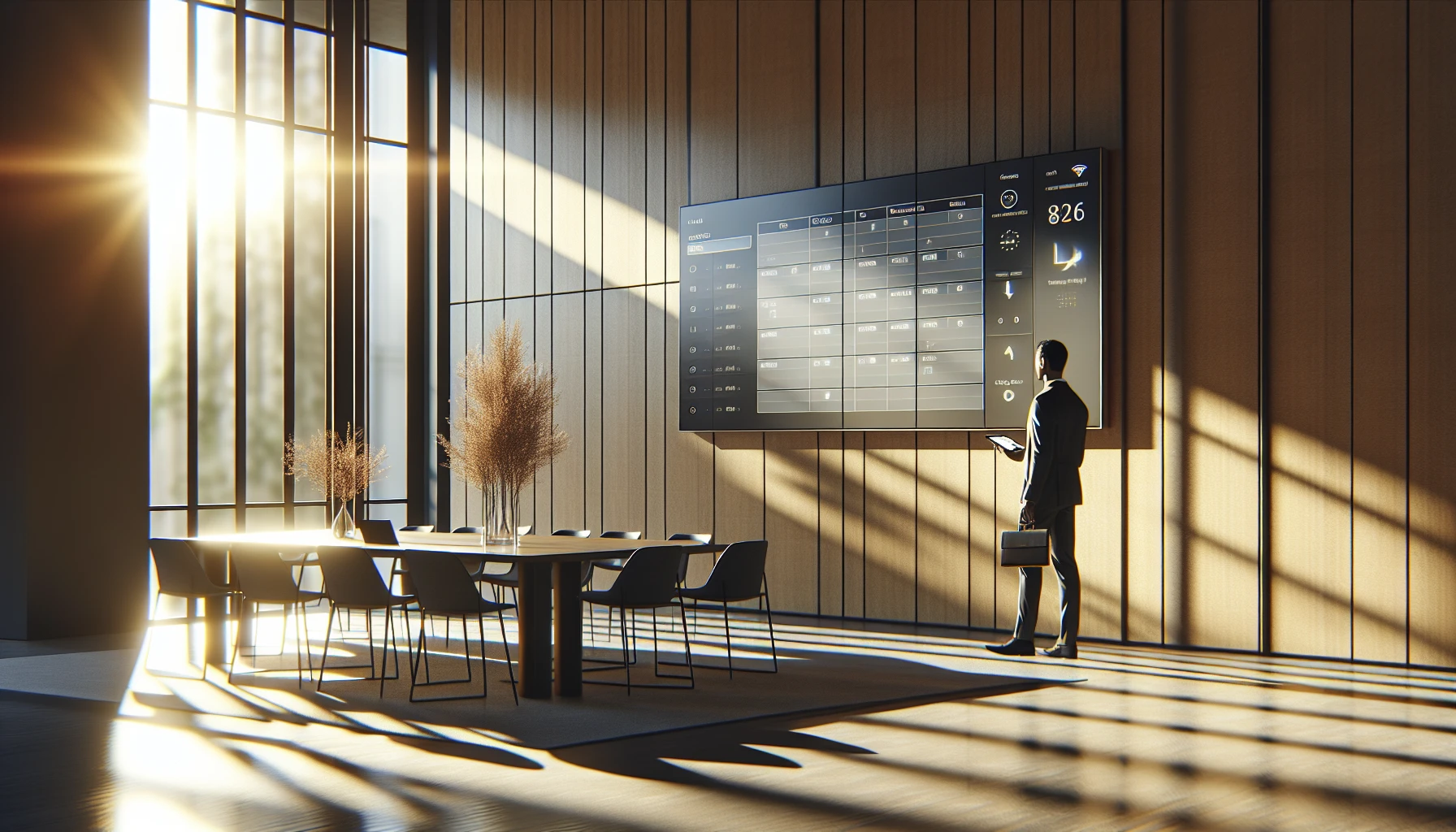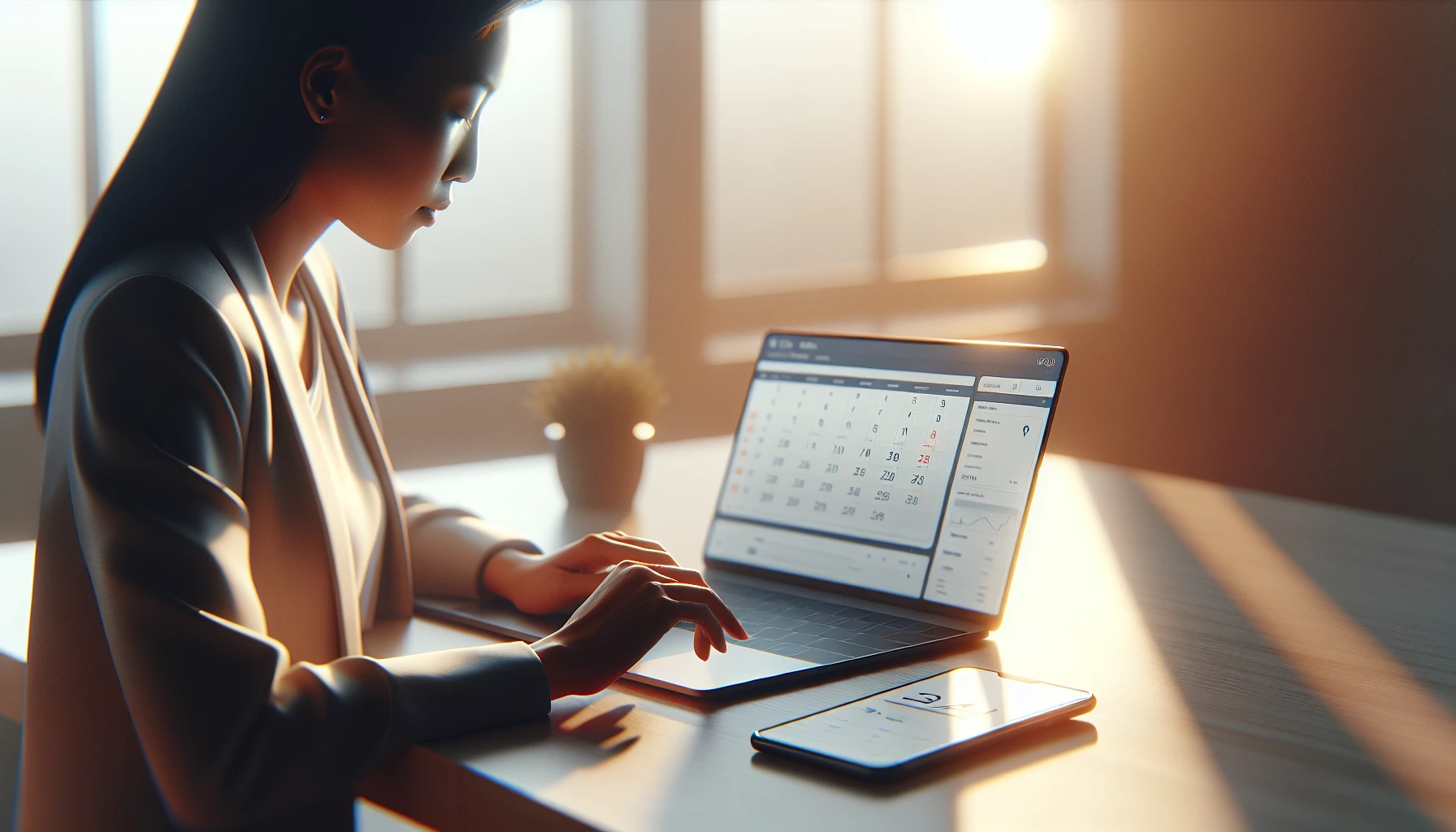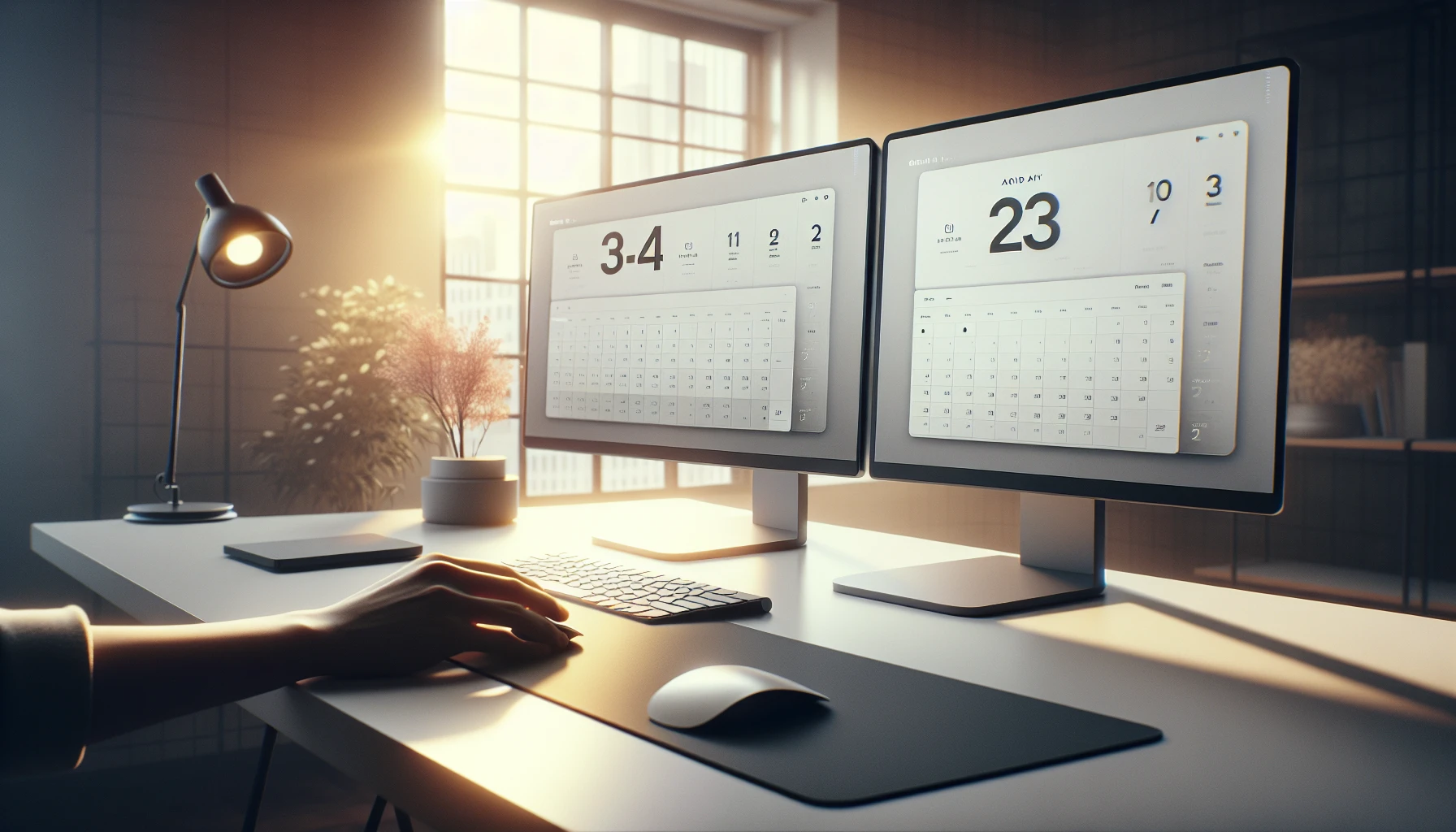· Ricardo Batista · 11 min read
Meeting Room Scheduler - 5 ways to book meetings fast
Meeting room scheduling tech is changing fast, using simple digital calendars & room booking tools to make office work simpler and smoother.

Meeting room scheduling tech is evolving, and you might find that older methods don’t always keep up with busy teams. This article goes over simple tools and ideas to help you set up your space, mixing ways to connect digital calendars and managing systems like Microsoft 365. It’s written in plain language to help beginners get the hang of it.
Key Takeaways
- Meeting room scheduling tech makes booking space easier and smoother
- Digital calendars and room booking tools help reduce scheduling conflicts
- Our system can automatically ping the attendees that arrive late to your meetings for better punctuality
- Hardware integrations with systems like Teams and Zoom create a more connected meeting experience
- Using user-friendly tools and setups simplifies the overall meeting process and saves time
Meeting Room Scheduler in Modern Workplaces
Introduction and Overview
Meeting room scheduling has grown into a key component of modern workplace management. With more companies relying on collaborative environments and hybrid work models, effective scheduling systems are becoming essential to keeping everything running smoothly. Managers and teams now want not only to reserve rooms efficiently but also to deal with common issues such as late arrivals. One neat trick is meeting reminders that automatically ping attendees who show up late, thus encouraging punctuality and helping meetings start on time.
This article explores the tools, hardware, and next-gen ideas that are shaping the meeting room scheduler landscape. We cover AI-powered audio and video (AV) solutions, scheduling tools integrated with Microsoft 365, hardware options for room solution enhancements, and digital workplace apps that can optimize room bookings and AV coordination.
AI-Powered AV Solutions and Yealink
The integration of artificial intelligence in AV solutions is rapidly emerging in conference technology. One notable player in this area is Yealink. Their comprehensive solutions are designed to simplify meeting room management while enhancing participant experience. With AI-powered cameras and microphones, meeting rooms run smoother, and the technology can even analyze audio cues to adjust environmental settings in real time.
Steps to get started with Yealink’s AI-powered AV solutions:
- Visit Yealink’s Solutions to explore the latest technology offerings.
- Choose a system that fits your room size and usage patterns. Larger rooms might benefit from more sophisticated audio analyzers, while small team rooms might only need basic setups.
- Integrate the chosen solution with your existing scheduling system to blend room reservations with AV control seamlessly.
- Configure alerts to send meeting reminders, particularly to notify latecomers and ensure that the meeting remains on schedule.
This approach not only simplifies room management but also creates a more balanced environment where technology works in harmony with human schedules.
Scheduling Tools with Outlook Scheduling Assistant and Room Finder
Most professionals are already familiar with Microsoft products, making it easy to set up and use scheduling tools that are part of Microsoft 365. Tools such as Outlook Scheduling Assistant and Room Finder simplify the task of booking meeting rooms, even if you’re juggling multiple calendars.
For those who rely on email reminders and calendar notifications, features like automated meeting reminders are invaluable. For example, if an attendee is running late, a nudge via email or a message can be sent automatically, prompting a quick update either indicating that they will join soon or allowing the meeting to adjust the agenda as needed.
Here’s a quick step-by-step guide on setting up these tools:
- Open your Microsoft Outlook calendar.
- Use the Scheduling Assistant to view everyone’s availability and select the best time slot.
- Click Room Finder to choose an available meeting space that fits your requirements.
- Integrate your calendar with external apps if needed to add custom reminder features, such as automatically alerting late joiners.
- Optionally, include an internal tool like the Outlook Meeting Reminder for extra notification capabilities.
This method ensures that room bookings flow naturally into daily routines while simplifying the logistics of meeting management. The automatic prompts help keep everyone on track, reducing wasted time and ensuring that meetings start and end as planned.
Hardware Integration: Logitech Tap Scheduler and Room Booking
Hardware plays a vital role in linking the digital and physical aspects of meeting rooms. One popular solution is the Logitech Tap Scheduler. This device integrates with many digital conferencing platforms, including Microsoft Teams and Zoom, to make booking meeting rooms both effective and visually appealing.
Key features of the Logitech Tap Scheduler include:
- A user-friendly touch screen interface that displays room availability at a glance.
- Integration with scheduling software to update room statuses in real time.
- Compatibility with various conferencing platforms so that room functionalities are in sync with your digital workspace.
- Built-in support for meeting reminders that automatically alert users who are late, ensuring that everyone knows the meeting’s status.
Other hardware options, such as dedicated room booking panels, can also be set up next to the entrance of a meeting room. These panels simplify the cancellation or rescheduling process by letting users update their booking status immediately on the device.
For those looking to dive into detailed setup instructions:
- Start by mounting your device according to manufacturer guidelines.
- Connect the scheduler to your meeting room management system through an available network.
- Configure software settings to send automated alerts if participants join the meeting late.
- Test the system using trial bookings to ensure that reminders and scheduling notifications trigger as planned.
Using the right hardware makes the entire process more efficient. It not only addresses booking needs but also ensures that every meeting runs as smoothly as possible.
Integration with Digital Workplace Apps
Digital workplace apps like Crestron Scheduling and Appspace add an extra layer of optimization to meeting room management. These tools focus on streamlining communications, providing clear room usage data, and coordinating AV resources. When these apps integrate with meeting room schedulers, they help organizations reduce scheduling conflicts and ensure rooms are used to their full potential.
Steps to integrate digital workplace apps with your scheduling system:
- Choose an app that matches your organization’s size and meeting culture.
- Set up an account on platforms like Crestron or Appspace and link them with your existing reservation system.
- Configure the app to manage booking statuses, equipment, and even room occupancy trends.
- Incorporate automated meeting reminders that alert users when they are late or if a meeting needs to be rescheduled. This can be tied to both physical devices and your notification system.
- Train employees on how to use the app effectively, ensuring everyone knows how to book rooms and manage meeting alerts.
Digital workplace apps streamline the process, making it easier to coordinate between teams. With these integrations, even unexpected delays or room changes can be managed effortlessly, ensuring that meetings run with minimal disruption.
Future Trends and Best Practices
The future of meeting room scheduling lies in the integration of more intelligent systems that can not only manage bookings but also anticipate needs. Innovations in AI and machine learning are making meeting environments more responsive to user behaviors. Automatic meeting reminders continue to evolve, expanding beyond simple alerts to provide richer context and real-time updates.
Emerging trends to watch include:
- Enhanced predictive algorithms that adjust room bookings based on usage patterns.
- More effective integration between hardware and digital platforms that shares insights across systems.
- The use of augmented analytics to suggest optimal meeting times and recommend room setups based on historical data.
- Integration of smart sensors that detect occupancy and environmental conditions, which in turn trigger automatic alerts and adjustments.
Best practices for improving scheduling reliability and user experience include:
- Regularly reviewing booking data to identify and resolve common problems, such as late arrivals.
- Setting up clear guidelines for room use that include rules for meeting reminders. For example, configuring systems to send an email when an attendee is late can help reduce overall delays. You can refer to tips found in guides like the Meeting Reminder Email available on our blog.
- Training staff to use both the hardware and software components effectively. Simple tutorials and cheat sheets can help everyone stay on the same page.
- Testing and updating your systems periodically to incorporate the latest features. As technology advances, continuous updating of both integrations and reminder systems ensures maintaining efficiency.
For those who want a practical approach:
- Start by mapping out your current scheduling workflow.
- Identify key pain points such as late arrivals, double bookings, or underused rooms.
- Implement one tool or software update at a time, monitoring its impact before moving on to the next upgrade.
- Maintain open communication channels with staff so that any new feature, like automated meeting reminders, is well-understood and properly utilized.
These incremental changes can generate significant long-term benefits. They not only improve the efficiency of daily operations but also create a smoother—and more productive—meeting environment. The shift towards more automated systems means that even small organizations can benefit from the technology traditionally reserved for large enterprises.
Utilizing the right mix of digital management tools and hardware solutions makes a big difference. When planning for the future, consider how new technologies might further reduce inefficiencies. For example, smart systems could soon offer real-time feedback about room conditions or attendee engagement, allowing team leaders to address issues before they become major disruptions.
Another useful resource for those looking to adopt new scheduling trends is exploring how various platforms and tools can work together. For example:
- Check out case studies from companies that have successfully integrated software with hardware to create a seamless meeting experience.
- Look at resources provided by vendors such as Appspace and Crestron to learn more about optimizing room usage.
- Investigate upcoming events and webinars that highlight the latest in meeting technology trends, providing ideas for continuous improvements.
Beyond just booking rooms, consider how the following practical tips can help:
- Use templates for regular meeting reminders to ensure consistency.
- Leverage survey tools to gather feedback about meeting efficiency and then adjust the scheduling system accordingly.
- Set up automated follow-up emails to remind participants of their meeting obligations and encourage punctuality.
- Experiment with different reminder methods like pop-ups on desktop apps, text messages, or even notifications delivered through workplace chat channels.
Incorporating these steps can lead to noticeable improvements in meeting attendance and engagement. When systems remind participants automatically, it creates both accountability and awareness, prompting everyone to be more mindful of their schedules. These strategies can, over time, transform the way meetings are run—even making them start a little more on time.
Future workplace environments will blend physical room booking with advanced digital management, offering an optimal mix of meeting room efficiency and user-friendly design. By following these practices and testing new ideas gradually, teams can enjoy a more streamlined workday where every meeting starts on time, and the overall experience is significantly improved.
Conclusion
In this article, we explored the basics of meeting room scheduling tech and how it can help modernize your workspace. We looked at some easy-to-use booking panels, digital calendars, and smart hardware like Logitech Tap Scheduler and Crestron. One important learning was that digital tools make scheduling smoother and save time. Another key point was how integration with everyday apps, like those in Microsoft 365, encourages better team collaboration. Some tips may seem a little rough around the edges, but they’re truly meant to simplify your work life.
By leaning on these tools and ideas, you can avoid the common headaches of setting up meetings, reducing confusion and boosting productivity. The takeaway is that a little investment in technology now can make your daily meetings run without stress. And if you’re looking for an extra push to keep everyone on track, don’t forget that Meeting Reminders specializes in automatically pinging attendees when they arrive late to your meetings. Try these approaches and see how easy your meeting scheduler can really become.
Related Posts
Frequently Asked Questions (FAQs)
What is a meeting room scheduler?
A meeting room scheduler is a tool that helps you book and manage meeting spaces easily. It links with your calendars and room booking systems, so you don’t have to worry about double bookings, and it makes sure everyone knows where and when the meeting is. It’s really useful if you run busy offices.
How do I integrate my digital calendars with a meeting room scheduler?
Most systems work with popular tools like Microsoft 365 and Outlook. You just connect your calendar by following the settings in your scheduler tool. Some even let you drag and drop events into a room calendar. For a smooth setup, check out the guidance on Microsoft 365’s site.
What are the main benefits of using a meeting room scheduler?
Using one saves time, reduces conflicts, and keeps your schedule neat. It minimizes confusion over room availability and can send reminders so everything runs on time. Plus, syncing your room schedules with your digital calendar means less hassle.
How secure are meeting room schedulers?
These systems usually use modern encryption to protect your data. They ensure that only authorized users can book or modify meetings. Always check with the provider’s security page to see what safety measures and privacy policies they have in place.
How does your solution automatically ping the attendees that arrive late to meetings?
Our platform, Meeting Reminders, is designed to automatically send reminders and pings to late attendees. This feature helps keep meetings on track without extra hassle, ensuring everyone stays in the loop even if they’re a few minutes behind.



